
How Tall Is Japan's Largest Torii? Top 5 Largest Torii in Japan
You've probably noticed that when you visit any shrine in Japan, you are welcomed by a towering gate called “torii.” Why do you think there are torii gates at Japanese shrines? Read on for an explanation on torii, as well a list of the five largest torii in Japan and information on sightseeing spots near them!
This post may contain affiliate links. If you buy through them, we may earn a commission at no additional cost to you.
Why Do Shrines Have Torii?
A “torii” is a gate or archway commonly found at shrines. It serves as the demarcation line between the sacred precincts of the shrine and the world where humans live. It is also built to prevent those considered “impure” from entering the sacred shrine grounds. The inner part of a torii is considered to be a sacred place, so it is customary to bow first before passing through the torii.
There are various kinds of torii in Japan, but they can be roughly classified into two types. The first type is called “myojin torii” such as the one found at Fushimi Inari Taisha, a famous sightseeing spot in Kyoto. A myojin torii is a curved gate where the top lintel beam of the gate curves upward toward the heavens.

The other type of torii is called "shinmei torii." One example of this type of torii is the gate built at Mie’s Ise Jingu, which is the largest spiritual spot in Japan. This type is older than myojin torii and has a very simple structure, with a straight, parallel lintel at the top. The next time you visit a shrine, make sure to pay attention not just to the main shrine, but also to the torii!

[5th Place] Kashima Shrine (Hyogo): 26m
Kashima Shrine in Hyogo Prefecture is said to be a place where worshipers pray to get one of their wishes granted and to succeed in school. This shrine is home to a torii that stands 26m high and is ranked as the fifth largest torii in Japan. Torii gates are usually made of stone or wood, but the torii at Kashima Shrine is made of titanium, making it the only one of its kind in the world. Its unique appearance brought about by its slightly glossy coating will entrance you.
Access: Shuttle bus going to Kashima Shrine from JR Himeji Station/Kakogawa
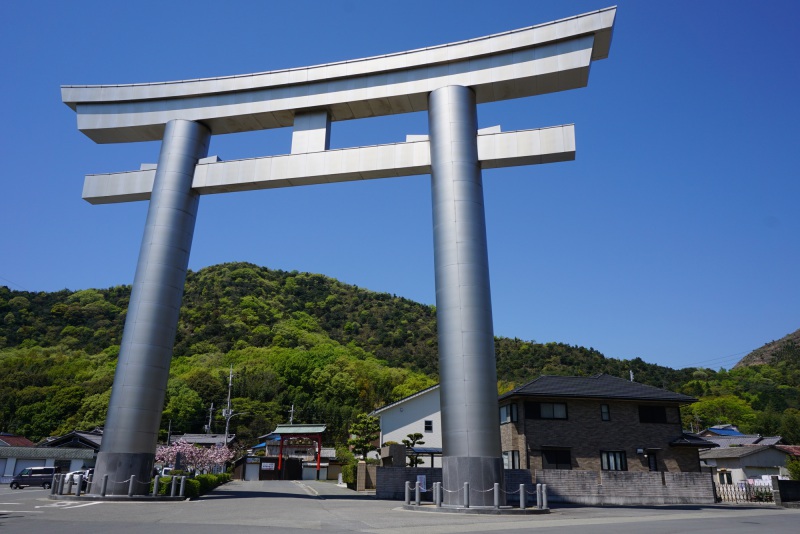
There are many nature-rich parks and shrines around Kashima Shrine. Sone Tenmangu, located about 3.5km from Kashima Shrine, enshrines Sugawara no Michizane, the deity of learning. Inside the shrine precincts, there is a pine tree called “Sone no Matsu” that is believed to have been planted by Michizane himself.

[4th Place] Saijo Inari (Okayama): 27.5m
Saijo Inari in Okayama is one of three great inari shrines in Japan. An inari shrine is a place that enshrines Inari, the deity of good rice harvests. The massive torii at Saijo Inari is ranked as the fourth largest torii in Japan, boasting a height of 27.5m. I have actually seen this torii, and I found that while most of the torii in Japan are bright vermilion in color, this shrine’s torii has a traditional dark red ocher color, giving it a stately appeal which makes it even more gorgeous.
Access: Approx. 5-minute ride by taxi from Bitchu-Takamatsu Station on the JR Momotaro Line (Kibi Line)

Drive for about 15 minutes from Saijo Inari and you will reach Kibitsu Shrine, known for its corridor spanning around 400m in length. Its beautiful honden (main shrine), which has been designated as a national treasure of Japan, is definitely worth seeing!

[3rd Place] Yahiko Shrine (Niigata): 30.16m
Yahiko Shrine in Niigata has a long history, having been built more than 2,000 years ago. This venerable shrine has even appeared in the Manyoshu, Japan’s oldest anthology of poems. Its torii was built to commemorate the opening of the Joetsu Shinkansen bullet train and stands 30.16m high, making it the third largest torii in all of Japan. If you want a more stunning photo of the torii, take it against the backdrop of Mt. Yahiko, the sacred mountain that can be seen across the torii.
Access: Approx. 15-minute walk from Yahiko Station on the Yahiko Line
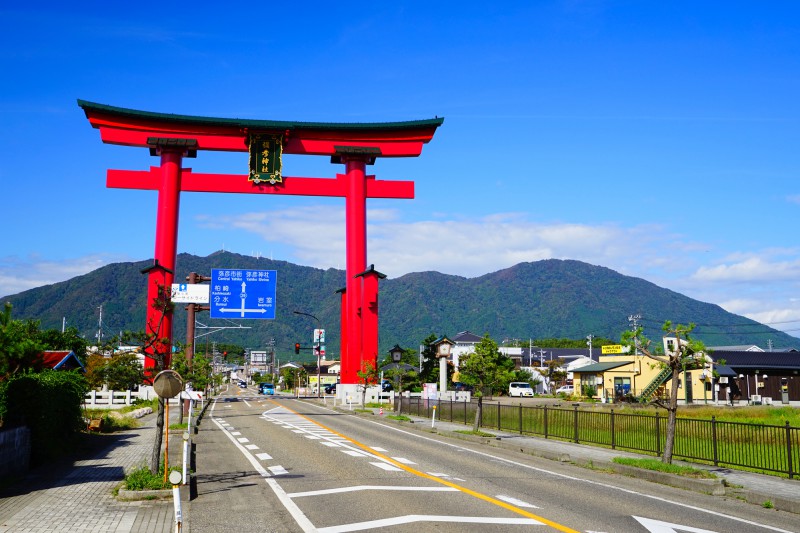
When you’re done visiting Yahiko Shrine, why not go to the mountain’s summit via the Mt. Yahiko Ropeway? You’ll get there in just about 5 minutes. Take in the gorgeous view from the summit while breathing in the clean, crisp air.
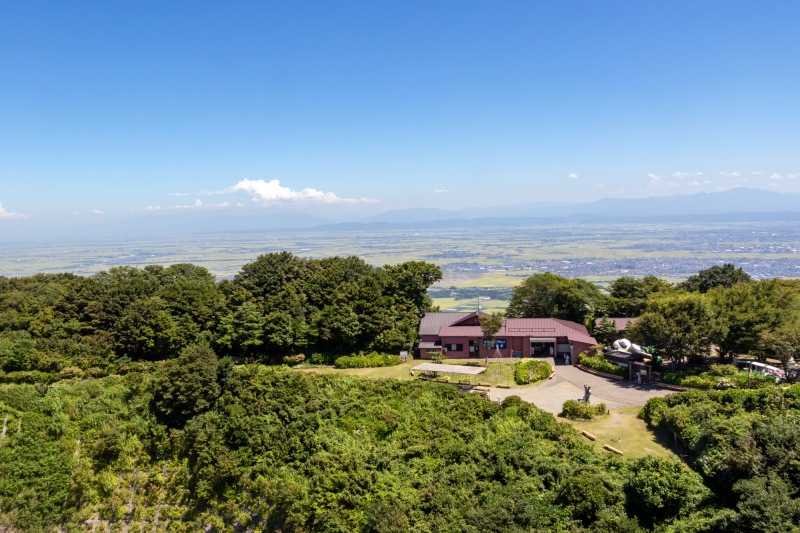
[2nd Place] Omiwa Jinja (Nara): 32.2m
Nara’s Omiwa Jinja is said to be the oldest shrine in Japan. It does not have a main shrine, though, as the towering Mt. Miwa behind the shrine is believed to house its deity. This shrine’s enormous torii measures 32.2m in height, making it the second largest torii in the country. It was built in 1984 in celebration of a visit by Emperor Showa and the 60th year of his reign. A lot of people are shocked to see how massive this gate is, so if you ever visit Nara, this shrine is a must-see!
Access: Approx. 5-minute walk from Miwa Station on the JR Sakurai Line
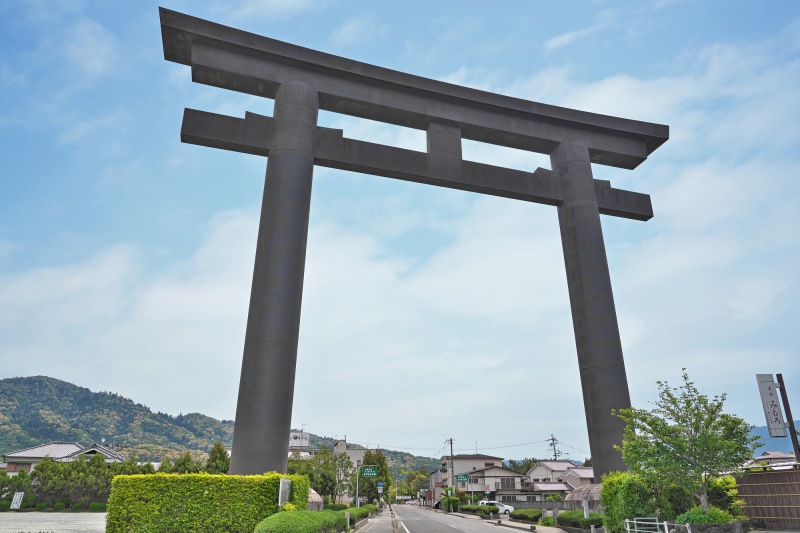
If you want to gaze at the great torii from above, then you should head to the Omiwa-no-Mori Tenbodai viewing platform! There, you will get to enjoy a sublime view of the huge torii that stands out from the townscape of Nara.

[1st place] Kumano Hongu Taisha (Wakayama): 33.9m
Kumano Hongu Taisha in Wakayama is one of the so-called Kumano Sanzan (the collective term used for the three great shrines in the southern part of Wakayama). This shrine has been gaining a lot of attention together with the rest of the Kumano Sanzan thanks to the Kumano Kodo, a World Heritage pilgrimage to the Kumano Sanzan. Its torii is famous for being the largest in Japan with a height of 33.9m.
Access: Approx. 60 minutes by bus going to Hongu Taisha from Shingu Station on the JR Kisei Main Line
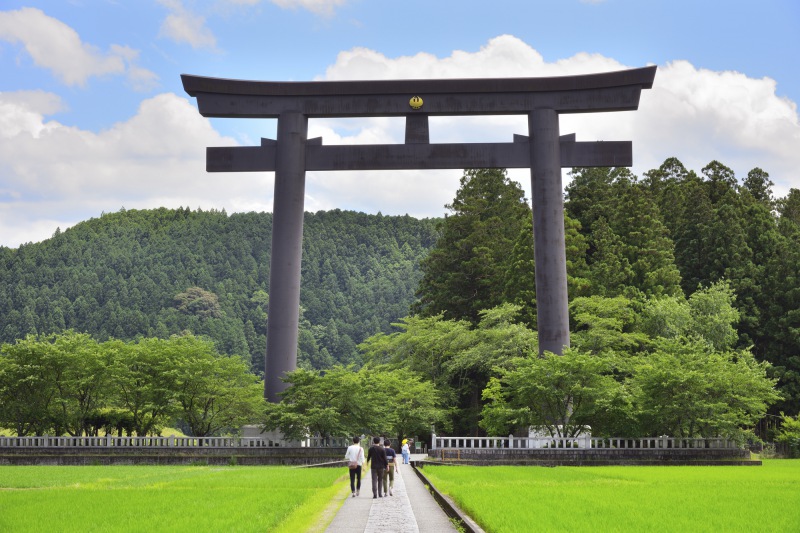
About 2km from Kumano Hongu Taisha, you will find Yunomine Onsen, the oldest hot spring in Japan. Discovered about 1,800 years ago, this hot spring is said to have soothed the tired muscles of those that have journeyed to Kumamoto in ancient times. Why not soak in this hot spring and take a break from your travels?
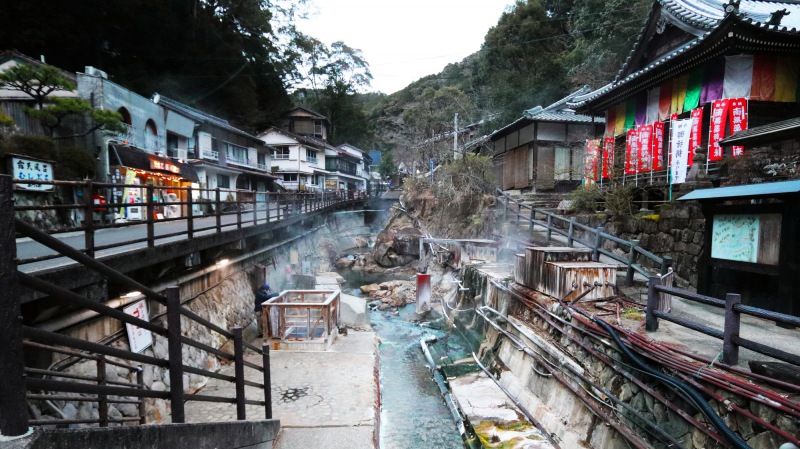
The information in this article is accurate at the time of publication.



